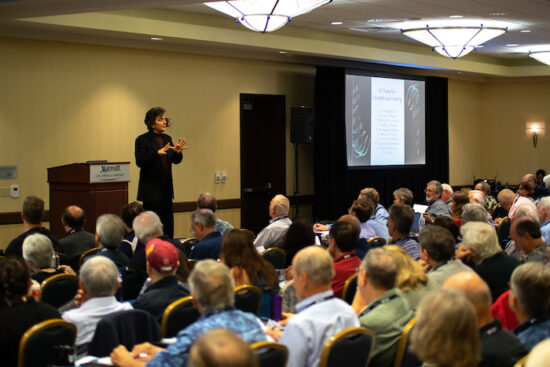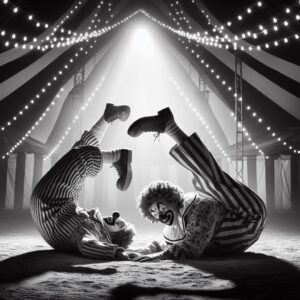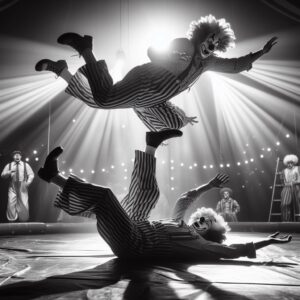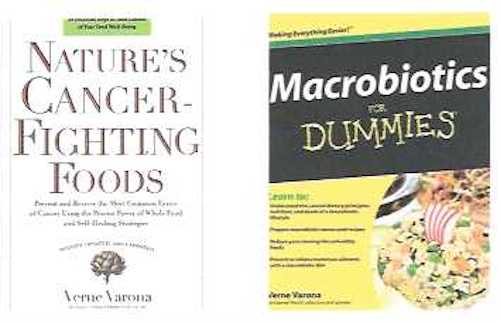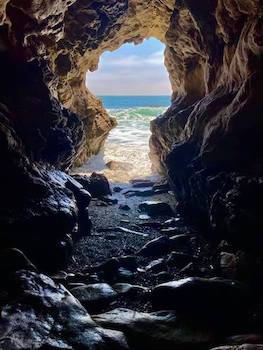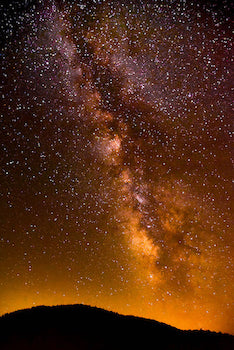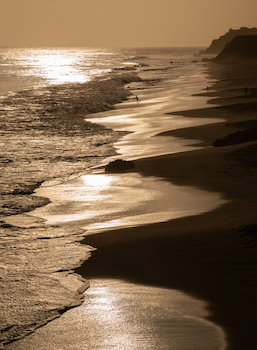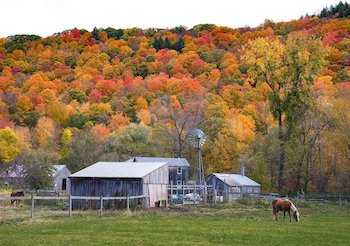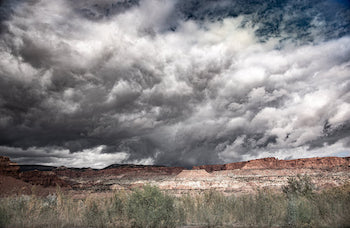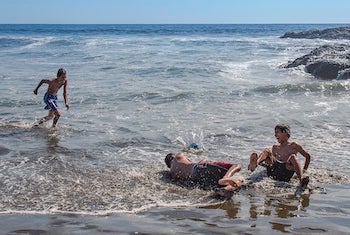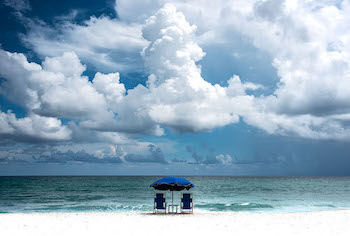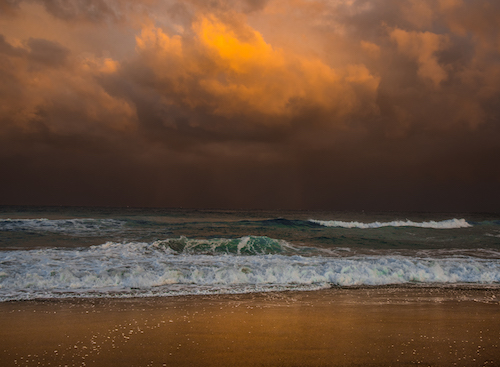Nutritionist / Screenwriter / Photographer: Verne Varona
I first met Verne Varona over twenty years ago following a talk he gave on health, nutrition, and lifestyle. He is a superb presenter with a lot to say.
For whatever reason, we found ourselves talking almost immediately about the circus and in particular, about clowns. Verne was a graduate of the Ringling Brothers Barnum and Bailey Clown College, a school devoted to grooming potential clowns for Ringling’s shows.
Roy Rogers and Charlie Chaplin
Before I go on, a bit of Verne’s history… At the age of six, a NYC talent scout recruited Verne to be a model for a line of western wear that had just been released by Roy Rogers and Dale Evans. At venue’s like The Warldorf Astoria, Verne went on stage with Roy and Dale, cap gun in hand, modeling clothes that every Roy Rogers fan wanted for themselves.
(As an aside: When my parents sent me to Sunday School, I was asked my name. I replied: Roy Rogers. Over and over, they asked. And over and over, I insisted: Roy Rogers! They had to find my parents to find out my real name. I was among those who wanted the western wear Verne was modeling.)
By his mid-teens while living in Los Angeles, Verne had done print modeling as well as commercial and some television acting. However, there occurred a pivotal moment in his young career, perhaps better to say a pivotal moment in his life. Verne saw the films of Charlie Chaplin. “I was stunned!” he recalled. “I went nuts… his agile movements, his well-organized routines, his mannerisms. I was mesmerized.”
Verne spent what money he had on film rentals, watching Chaplin films over and over, stopping the film to duplicate Chaplin’s movements and practice his routines. “In those days, if you wanted to see a Chaplin film you either had to wait to see it on television (rare), or rent the actual film.”
Clown School
At the age of 18, Verne applied to the Ringling Brother’s Clown College at their Winter quarters in Venice, Florida.
This school was in its second year and had received massive publicity. Out of 1300 applicants, Verne was one of 28 students selected. The curriculum: 2-1/2 months of juggling, acrobatics, unicycling, pantomime, clown theory, and even yoga. Lou Jacobs, a world-renown clown who was featured on a US postage stamp, was among his teachers. Verne’s hope was to develop a Chaplinesque character with abilities and skills suited for the more technical European or Russian one ring circus.
Unfortunately, those skills were not emphasized at the clown college. Rather, the focus was on broad humor, slapstick, pratfalls, simple gags with screaming clowns, not the skillful clowning common in European or Russian circuses. Verne learned what he could at Clown College, offered his heartfelt thanks, and left, hitchhiking to New York where, along with a fellow student, he performed street theater.
Verne: “We would walk into a department store, any department store, it didn’t matter, and ride the escalator. I had developed the ability to rest my weight on my hands allowing my feet to drag. This gave the appearance of someone falling down the stairs. Or, more ambitiously, I would pretend not to notice my partner, about 20 feet ahead of me bending down to tie his shoe just as he got off the escalator. I would nonchalantly flip over him and land on my back. My friend ran in circles yelling in an unintelligible language with dramatic flair. As observers gathered and caught their breath, we would suddenly jump up and run out of the store. Teenage clowning for bored, unemployed clowns.”
Macrobiotics, Health and Wellbeing
In many respects, Verne’s early life was charmed—modeling for Roy Rogers, the life of a teen actor, the romance of the circus. Still, there was a background concern. Both of Verne’s parents died young, as did many of his relatives from numerous degenerative diseases. On occasion, Verne worried that a similar fate might await him.
It was that concern that led him to Boston to study with Michio Kushi. Kushi is one of the philosophy and nutrition teachers who helped introduce the cultural dietary suggestions of macrobiotics to the West. Verne became a part of Kushi’s macrobiotic community, studying a holistic perspective: food, health and disease, philosophy, spiritual development, among other topics.
After sufficient study (though he would remain a life-long student), Verne began teaching. He developed his own training and educational program and began conducting seminars throughout the US and Europe, rapidly building a reputation as an authority on health and wellness.
In 1978, Verne moved back to Los Angeles where he opened a private practice and for 26 years counseled individuals on what he had come to see as the factors most crucial to total wellbeing: nutrition; attitude; stress management; a sense of purpose; humor; emotional expression; love; and faith. In 2012, he was the recipient of the Aveline Kushi Lifetime Achievement Award.
Two books grew out of Verne’s work in this area. Nature’s Cancer Fighting Foods, now in a fully revised second printing, and Macrobiotics for Dummies, a comprehensive work embracing a flexible, multi-cultural template for body, mind, and spiritual health.
Screenwriting
Many of us have been raised by the movies. The early westerns, for example. Roy’s movies. The Cowboy Code. Follow the code and good men triumph; the town is saved, peace is restored.
In addition to his work in the field of health and wellness, Verne is a screenwriter.
One of Verne’s screenplays tells the story of Will Rogers and aviation icon, Wiley Post. Rogers was an American humorist, writer, film star and humanitarian who is considered among the 100-influential individuals of the 20th century. He was beloved, perhaps in a way similar to Mark Twain.
Wiley Post was the first man to fly solo around the world. He is credited with having discovered the Gulf Stream. Both men were larger than life. Rogers hired Post to fly him to Alaska and then onto Siberia where Post was to chart an overland mail route through Russia. Sadly, their plane crashed near Barrow, Alaska, instantly killing both men. Given Roger’s enormous influence, America grieved as it had not done since the death of Abraham Lincoln.
Another of Verne’s screenplays takes place during the 1940s and features the skillful and coordinated partner movement of the Swing dance. Woven throughout this screenplay is the theme of reincarnation—life coming around and finding a way to complete itself.
Yet another screenplay explores the world of sales. Financial greed. Self-revelation. It’s a cautionary tale; an examination of what is lost when selling at the cost of what essential to oneself.
Lastly, a documentary, a film that details the success of a program that teaches young children how to prepare healthy foods. It’s a film that explores not only the benefits experienced by the children but by their families, as well.
The Creative Life
Thomas: So, if I can put it this way, what would you say is the secret?
Varona: For me, it is the living of a creative life. Nothing puts you in the present moment as quickly as does creative work. Find something you’re passionate about, challenge yourself, make a contribution—that’s what I’d say. In retrospect, I experienced sickness and death at an early age. That gave me a deep sense of respect for time… the importance of not wasting time… the importance of “getting on with it”.
Thomas: What does it mean to “get on with it”?
Varona: It means… Let’s see… It means, creating meaningful goals and consistently moving toward them without fanatical mono-focus. In my case, the creative life is also, in a sense, the playful life. Playing with the moment as you find it. I wanted the skills that would allow me to do that: clown school, street theater, experimenting with mannerisms and voices, how to walk, fall and get back up.
Many years ago, I used to teach a weekend of circus skills. One of the fundamental principles of clowning is to first cultivate a skill, and then make fun of it. I would teach students a basic tango. After they felt confident, we would then improvise a comic tango. It’s similar to creating music: you learn scales so you can improvise. Once knowing the basic structure, you can veer away and still remain in tune.
The trick to real play is to be willing to let go of all that you think you should be doing… to allow your impulses to rule. This requires self-trust, a willingness to risk. When I say “get on with it”, I mean just really letting go, trusting that your motives are honest… Taking an emotional or artistic risk can and often does turn out positive, if not therapeutic and entertaining!
Perspective
Here, perhaps, is an example of the point Verne is making…
For many years I worked behind a desk. Each morning I would check my phone messages and not infrequently, I would discover that Verne had left me a message. These were not ordinary messages; they were playful, witty, improvised gems.
They were messages that enlivened my morning, gifts of a sort, making me laugh and on occasion, marvel. Their effect was to enlarge the day.
Maintaining your perspective is your responsibility, yes, but it is a whole lot easier if you’re working with a team. Hence, the various individuals profiled on this site… Hence, Verne’s messages, a lovely, creative, much appreciated form of teamwork.
Worldview
Go to vernevaronaphotography.com and you will see another of Verne’s passions: Photography. Take your time. Look through the images available. They are organized by category and the categories cover a lot of ground.
In this exhibit, I’ve tried to tell a bit of Verne’s history and more, to hint at his philosophy of life. A small sampling of Verne’s photographs closeout the exhibit.
For more of Verne’s photography, go to varonaphoto.com.
Concerning counseling services, seminars, or screenplays,Verne can be reached at [email protected].
David Thomas, PhD

